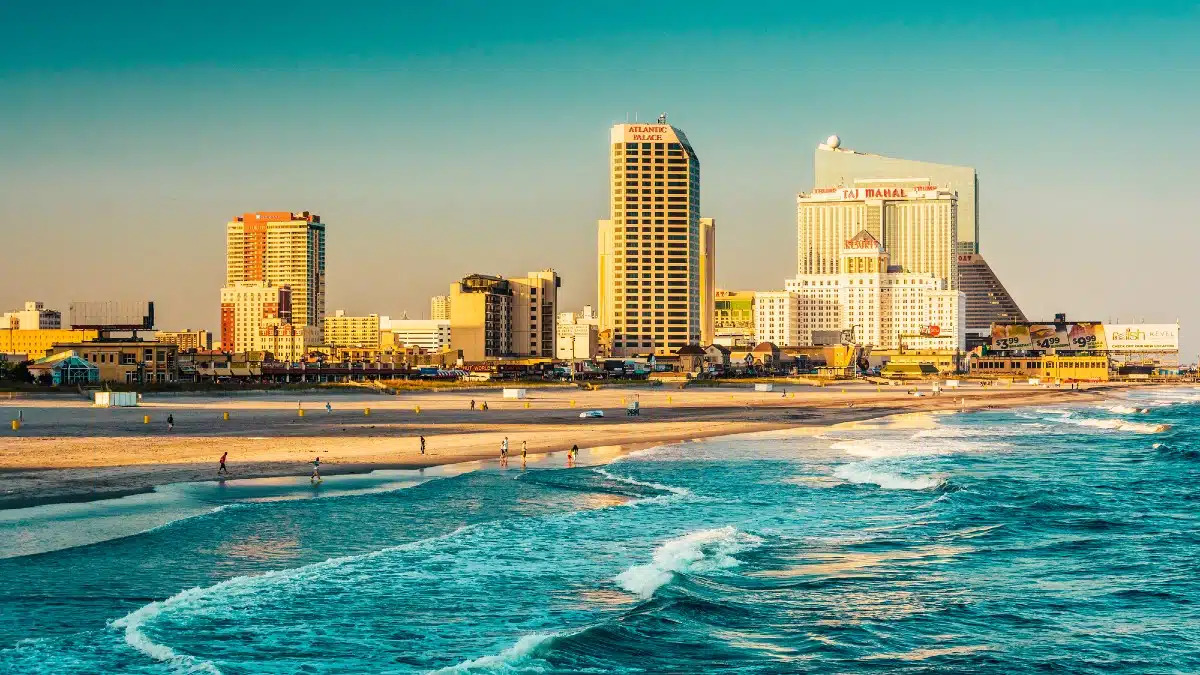In some cities, a $100k salary can feel like poverty due to the high cost of living. High costs can also lead to greater economic inequality, as only the wealthiest can afford to live comfortably in these areas. Addressing the affordability crisis in these cities is crucial to ensure that all residents can achieve financial stability and a good quality of life.
1. Honolulu, HI

Beneath the stunning beaches and tropical breezes, Honolulu residents face some serious financial headaches. Groceries cost 44% more than mainland prices – a gallon of milk runs close to $7, while a basic sandwich can set you back $15. Want to grab some local fruits? That’ll cost double what you’d pay in California. According to the U.S. Bureau of Labor Statistics’ 2023 Consumer Expenditure Survey, Honolulu’s cost of living ranks among the highest in the nation.
2. Washington, D.C.

Around the corridors of power, Washington D.C.’s economy creates its own financial ecosystem. Living costs soar 39% above national averages, fueled by government and lobbying salaries. Grabbing lunch near Capitol Hill? Count on spending $20 minimum. Local corner stores charge convenience store prices, while basic services command premium rates. Basic services like haircuts ($45+), dog walking ($25 per walk), and home maintenance come at premium rates that reflect the area’s inflated income levels.
3. Boston, MA

Intellectual capital comes with a steep price tag in Boston. Monthly rent averages $2,799, while the biotech boom keeps pushing costs higher. Students compete with young professionals for limited housing, creating a pressure cooker market. The colonial-era street layout limits new construction, keeping supply tight and prices high. The city’s strict zoning laws and community preservation rules make new construction projects move at a snail’s pace, keeping housing inventory painfully low.
If you’ve enjoyed reading our content and are passionate about learning wealth, managing your finances, and achieving financial freedom, we’d love for you to join our community! Click here to follow Invested Wallet for more.
4. San Diego, CA

The sunshine tax hits hard in San Diego, where median rent reaches $2,828 monthly. Geographic constraints between Mexico and the Pacific mean limited housing options. Those ocean views? They’re factored into every price point. According to The San Diego Union-Tribune, San Diegans need to earn nearly $48 an hour to afford living in the county, primarily due to high rent costs averaging $2,479 per month. Beach proximity drives up everything from gas prices to grocery bills, creating a cost spiral that impacts daily life choices.
5. Oakland, CA

Living costs in Oakland have surged dramatically, forcing many longtime Oakland residents to relocate from their neighborhoods. The stark reality shows housing expenses running 46% above national averages. Small business owners and artists who once thrived in this vibrant community now struggle to maintain their footing. Many residents have started looking toward Sacramento and other surrounding areas for affordable alternatives. The cultural fabric of neighborhoods faces significant changes as new development projects reshape familiar streets.
6. San Francisco, CA

Living in San Francisco means grappling with a stark financial reality. The typical home now costs $1.2M, putting massive pressure on residents who don’t work in tech. Even basic apartments often require roommates well into your 30s. What’s really telling? Local teachers and firefighters typically commute 2+ hours each way because their salaries can’t match the tech-inflated housing market. The ripple effect touches everything – from $7 lattes to $25 burgers.
7. San Jose, CA

The numbers tell a harsh story in San Jose. A household pulling in $151,000 annually would struggle to make ends meet. Local food prices punch 81% above national averages, while basics like milk cost nearly double compared to other major cities. The math gets tricky fast: typical monthly expenses for a family of four can easily surpass $8,000 before savings or emergencies. The city’s restaurant prices have shot up too – a casual dinner for two easily costs $80. Even public transportation adds up, with monthly passes reaching $90 per person.
8. Irvine, CA

Past the manicured lawns and planned communities, Irvine shows its costly side. Housing runs 142% above national averages, squeezing out middle-income families from what looks like suburban bliss. A standard 3-bedroom house often demands $1.2M or more. Local parents face tough choices: maintain a grueling work schedule or move further inland. According to Fortune, even tech workers earning six figures feel the pinch, with many choosing long commutes over sky-high rents.
9. Seattle, WA

Seattle’s transformation comes with a hefty price tag. The explosion of tech jobs has sent living costs soaring 50% above national averages. A modest apartment in Capitol Hill? That’ll be $2,500 monthly. Groceries cost about 23% more than the national average, while utilities run 15% higher. Even basic services like haircuts ($75) and gym memberships ($85) reflect Seattle’s inflated economy. This creates a challenging environment where many residents earning $85,000 annually still live paycheck to paycheck.
10. Arlington, VA

Life near the nation’s capital brings its own financial challenges in Arlington. The proximity premium shows up clearly: housing costs sit 121% above national averages. Federal workers and contractors compete for limited housing stock, driving up prices across all neighborhoods. A typical one-bedroom apartment commands $2,200 monthly. Child care costs average $2,100 monthly per child, forcing many families to make tough choices about work and living arrangements.
11. New York, NY

The true cost of Manhattan life hits harder than most statistics suggest. Monthly rent for a basic one-bedroom apartment runs $3,770, setting a brutal baseline for everything else. What catches many newcomers off guard? The hidden costs stack up fast: $15 for basic takeout lunch, $150 monthly for a gym membership, and don’t forget those $18 cocktails. The city’s energy comes at a premium that reshapes daily habits and financial priorities. This financial pressure forces tough choices: shared living spaces, long commutes from outer boroughs.
12. Los Angeles, CA

The entertainment capital demands a hefty price from its creative workforce. Los Angeles residents earning $100k annually often take on additional work to cover basic expenses. Housing costs average $2,666 monthly, stretching budgets thin. California’s tax structure compounds financial pressures for entertainment industry professionals. Many talented individuals share apartments or live in outlying areas, trading longer commutes for manageable rents. Film industry workers increasingly question if their salaries can sustain LA living.
13. Anchorage, AK

Anchorage residents face unique financial challenges in America’s last frontier. Basic necessities cost 27% more than national averages, with winter heating bills causing particular strain. According to a 2023 Economic Research Institute study of high-cost cities, Anchorage presents a stark financial reality for its residents. Basic necessities cost 27% more than national averages, with winter heating bills alone often reaching $400 monthly during peak season. Groceries hit wallets particularly hard.
14. Scottsdale, AZ

Sunbelt migration transforms Scottsdale’s housing market daily. Local housing costs soar 76% above national averages as wealthy retirees and tourists reshape the real estate landscape. Working families struggle to find affordable homes in their own community. The influx of affluent newcomers brings economic growth but displaces essential workers. Local businesses scramble to retain staff who can’t afford nearby housing. Meanwhile, luxury developments replace older, affordable housing complexes, further shrinking options for working families.
15. Jersey City, NJ

Financial reality hits hard in Jersey City, where Manhattan’s influence drives housing costs 74% above national averages. A $100k salary quickly diminishes when factoring in the high cost of living. Commuters choose between expensive nearby housing or lengthy trips to more affordable areas. Young professionals particularly feel the squeeze as rent consumes large portions of their income. Local amenities attract residents but strain budgets already stretched by housing costs. The brutal math forces tough choices: live with roommates, commute from further out.
Follow Invested Wallet For More

If you’ve enjoyed reading our content and are passionate about learning wealth, managing your finances, and achieving financial freedom, we’d love for you to join our community! Click here to follow Invested Wallet for more.
